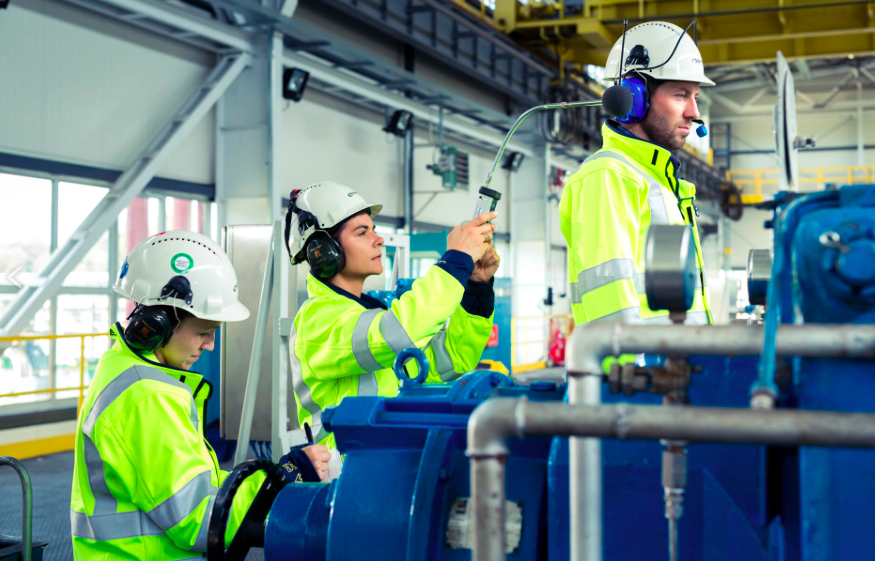Electromobility is one of several strategic directions for Poland’s economic development in the near term. On March 16, 2017, the Polish government adopted the Electromobility Development Plan, which set goals and directions for action in this area until 2025.
The energy composition of transport fuels, shaped through history, is a major challenge for both the Polish power industry and it’s transport sector. In time, it will also increasingly burden Polish cities, where noise and pollution are already a significant discomfort for inhabitants. From this perspective, electromobility is a strategic choice that will not only reduce dependence on energy imports, but also has the chance to become a source of competitive advantage for the Polish economy.
Global Trends
The emerging market’s potential is best illustrated by a forecast indicating that around 500 million electric vehicles (out of 2 billion vehicles in total) will be driving on the world’s roads in 2040. As a consequence, we can expect the sales of electric vehicles to grow rapidly — today about 500,000 units are sold each year, while in 2040 it could even reach 41 million units.[1] The expected market growth exceeds the production potential of today’s electric car manufacturers many times over.
In the present circumstances, it’s difficult to imagine the appearance of a mass-production car company based on the traditional combustion engine. The examples of Tesla, Google and Apple show that in the case of electric vehicles, the barriers to entry are considerably smaller. This applies not only to the construction of entire vehicles, but also to individual components. At the same time, it is a good opportunity for countries like Poland, which have not accumulated enough capital to compete in the traditional vehicle market.
Polish Answers
For this reason, one of the objectives of the Electromobility Development Plan is the advancement of the electromobility industry, which can be realized both through an appropriate proportion of electric vehicles produced in Poland out of the total number of vehicles and by a suitable degree of saturation of vehicles registered in Poland with Polish components.
Already today, a few Polish companies that bet on electromobility some years ago remain the European market leader in their segments. Solaris is a brand of electric buses not only recognized in Europe but globally. Many companies that have contributed to Solaris’s success by providing the charging infrastructure or components for the production of electric buses offer their own products independently on the European market today. What can be done for these companies to continue to grow? What can be done to add new ones?
Government activities are currently focused on two areas: the creation of future demand and targeting financing towards research in the field of electric vehicles and associated infrastructure. In April, the Ministry of Energy presented a draft law on electromobility, which comprehensively regulates the situation of consumers and manufacturers of electric vehicles. After the entry into law of the act:
- the purchase of an electric car will be cheaper (exemption from excise tax);
- the driver of an electric car will be able to drive more comfortably (allowed the use of bus lanes) and cheaply (free parking in city centers);
- by 2020, a charging infrastructure for electric vehicles will be established (over 6,000 points in 32 metropolitan areas);
- local governments will be more eager to choose electric buses (infrastructure construction will be faster and cheaper);
- local authorities will be given a real tool to fight for better air quality in their area (possibility of establishing zero-emission zones).
The bill is a result of the annual cooperation of the Ministry of Energy with companies and its analysis of the experiences of other countries. The electromobility act will be a constitution for market development — eliminating identified barriers and creating new advantages.
An important aspect of the adoption of the law will be the creation of sufficient demand for electric vehicles. In addition to incentives for businesses and individuals, the electromobility act introduces incentives for local and central administrations to switch to electric transport. We’ve proposed that by 2025, 50% of cars used by the central administration be powered by electricity.
I am convinced that the law will not only contribute to industry development, but will also lead to a significant increase in the number of electric vehicles on the roads, which is also a goal of the Electromobility Development Plan (1 million electric vehicles by 2025).
Innovative Approach to R & D
The biggest challenge, but at the same time the program’s biggest opportunity, is to create a new industry. This will not be possible without concentrating R & D resources, which have the chance to play the role of a springboard for good ideas in electromobility.
As part of the implementation of the Electromobility Development Plan, the first dedicated financial support instruments for both companies and local government units have been launched. The Ministry of Energy is working on the establishment of a Low-Emission Transport Fund, which will generate nearly 5 billion PLN ($1.3 billion) to support the construction of infrastructure, vehicle purchases and electric vehicle manufacturers. The National Fund for Environmental Protection and Water Management is also working on a dedicated program.
The National Center for Research and Development (NCBiR) is launching the No-Emission Public Transport program, which aims to develop a next-generation electric bus. It’s worth emphasizing the program’s unique formula, where research is started only when there is sufficient demand for an innovative product. NCBiR is currently working with cities to identify their needs in relation to electric buses. In the next phase, NCBiR will launch a research competition which will result in the development of a bus, as defined by local authorities. Buses will then be purchased by cities that were involved in conceptualizing the product. This formula maximizes the chances that the effects of R&D will be used commercially.
Another manifestation of the innovative approach to the development of the industry is the activity of Electromobility Poland, which is supposed to lead to the launch of Polish electric cars, but not through building independent production lines, but by supporting existing private entities. The primary tool of Electromobility Poland for achieving this goal is the engagement of entities operating on the Polish market in the field of vehicle or component production, integration of their potential and preparation for the industrialization stage.
New models in the electromobility market
I am convinced that there is no turning back from electromobility. The question is not if but when electric cars will become a natural element on the landscape of our streets. This demonstrates the activities of auto companies, which are focused not only on the adaptation of gas-powered cars to electric propulsion, but also on finding completely new forms of transport use, for which electric drive is only a means and not an aim. This is quite natural, given the increasing volume of traffic in city centers, problems with access to downtown at peak hours or insufficient parking spaces. An electric vehicle, being quiet and non-polluting, will gradually gain in popularity.
However, it is not yet known what type of cars, including electric, will be used in the cities of the future. U.S. research shows that the average car sits unused 96% of the time. European studies show that statistically we use the car for about an hour a day. This means that cars take up public parking space instead of moving. The better use of vehicles that have arrived in the city center and for some reason must remain, poses a challenge, but also presents a chance to spread alternative ways of using cars. Increasingly popular car sharing and carpooling provide a partial answer, but business models in the electromechanical market provide much food for thought.
In the electromobility act, we introduce the possibility of establishing zero-emission zones in city centers. Such a move, though judged by some to be socially difficult, is necessary to create a space in which new business models can emerge. Gradually we want to persuade Poles that city centers without gas-powered cars can be not only more appealing but also more efficient in terms of the mobility options offered.
Change means opportunities…
Henry Ford, who introduced the Ford Model T in 1907, a relatively low-priced car that revolutionized transport at the beginning of the 20th century, liked to say that if he asked people what they wanted, it would have been a faster horse. This did not prevent him, however, from selling over 15 million Model Ts in 20 years. In a short period, the internal combustion engine had displaced horse transport from American roads. Technological change had defended itself. The car was simply more reliable, comfortable and faster. I’m convinced that a similar revolution awaits the automotive sector in the coming decades.
A unique opportunity is presenting itself to Poland to enter a growing segment of the world market and to occupy an important place in it. In preparing the Electromobility Development Plan, we have tried to create levers that will enable us to capitalize on our domestic social capital. Polish students win world competitions in the fields of robotics, electrical engineering and computer science. Polish designers and engineers are working successfully for the world’s biggest automotive companies. It’s time for a project on a scale that matches their ambitions and skills, which will encourage them to join in the construction of Polish, and perhaps eventually global brands in the electromobility market.
Source: The Warsaw Institute








